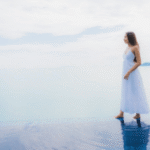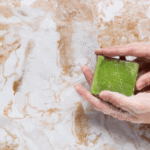Azul Serenity is more than a phrase; it is a lifestyle movement that combines the essence of calm, balance, and renewal with a contemporary touch. Within the first few moments of learning about it, most people want to know: What exactly is Azul Serenity, and how can it be applied in daily life? Simply put, Azul Serenity is a design and wellness philosophy that embraces the soothing qualities of the color blue and merges them with mindful practices, natural aesthetics, and restorative environments. It is not only about visual design but also about shaping a life approach where harmony, calm, and clarity dominate over noise, stress, and disarray.
In recent years, the idea of Azul Serenity has been adopted by designers, wellness coaches, hoteliers, and individuals seeking a more meaningful pace of living. It incorporates elements such as color psychology, interior spaces, emotional wellness, and sustainable choices into a unified vision of calm. People use it to rethink their homes, workplaces, and even daily routines, aiming to cultivate an atmosphere where focus thrives and anxiety diminishes. The name itself—“Azul” meaning blue, and “Serenity” representing calmness—encapsulates its very essence: the blending of visual peace with inner tranquility.
This article explores Azul Serenity as a holistic concept, offering insights on its origins, principles, practical applications, and cultural relevance. From the psychology of color to architectural trends and personal wellness routines, readers will find unique perspectives. “Calmness is not a luxury but a form of strength,” one lifestyle consultant explained, echoing the philosophy that Azul Serenity advocates. With an emphasis on both knowledge and utility, this guide will give readers practical directions, examples, and strategies to embrace Azul Serenity in ways that fit seamlessly into their lives.
The Origins of Azul Serenity
The idea of Azul Serenity is rooted in two traditions: the symbolic meaning of the color blue across cultures and the global movement toward mindful living. Historically, blue has been tied to trust, peace, depth, and introspection. Ancient civilizations used blue pigments to convey divine presence or natural infinity. In modern psychology, studies have shown that blue tones can reduce stress, lower heart rate, and inspire productivity without overstimulation.
Parallel to this, the last two decades have witnessed the rise of wellness-oriented lifestyles. From yoga studios to minimalist interior design, people have been shifting toward frameworks that prioritize mental clarity over consumption. Azul Serenity emerged as a synthesis of these two movements. It took the universal appeal of calming blue shades and married them with the growing demand for serenity in design, lifestyle, and even digital spaces. “We needed a word for peace you could live inside of,” said one architect, explaining how Azuls Serenity became shorthand for spaces that are restful yet modern.
Key Principles of Azul Serenity
Azul Serenity can be understood through four guiding principles: visual calmness, mindful balance, holistic integration, and adaptive sustainability. Visual calmness refers to the use of design and aesthetic strategies that rely on soft, balanced tones and uncluttered environments. Mindful balance is the intentional structuring of routines and practices that encourage harmony in work, rest, and relationships. Holistic integration emphasizes that serenity must exist across personal spaces, digital life, and emotional wellbeing simultaneously. Adaptive sustainability adds the layer of responsible choices in materials, consumption, and environmental impact, ensuring that calm does not come at ecological cost.
Each principle interacts with the others. A serene workspace, for instance, involves muted colors and natural light (visual calmness), scheduled breaks (mindful balance), limited digital noise (holistic integration), and eco-conscious materials (adaptive sustainability). Together, these choices represent Azuls Serenity in practice, reinforcing that serenity’s not accidental but designed.
Applications in Interior Design
Azuls Serenity has gained momentum in the world of architecture and interior design. Designers increasingly use it as a framework for building homes and offices that foster peace rather than clutter. Soft gradients of blue, pale greys, and natural whites dominate the palette. Furniture choices lean toward rounded edges and natural materials like wood and stone, while layouts prioritize open space and flow.
Lighting also plays a major role. Warm, diffuse illumination mirrors natural cycles, reducing overstimulation in the evenings and enhancing productivity in the mornings. The inclusion of indoor plants is another key element, as biophilic design aligns perfectly with the serenity ideal. For many, Azuls Serenity transforms living rooms into sanctuaries, bedrooms into retreats, and offices into spaces where creativity feels effortless.
Applications in Wellness Practices
Beyond physical spaces, Azuls Serenity influences how people organize their wellness routines. Meditation sessions guided by blue-themed imagery, mindful breathing exercises in calm settings, and even clothing choices that emphasize tranquil tones contribute to the lifestyle. Many wellness practitioners encourage clients to create “serenity rituals”—short practices such as journaling in a calming corner, drinking tea in silence, or starting the day with mindful stretches under natural light.
These practices are designed to anchor daily life in consistent calm. By associating serenity with tangible rituals, individuals strengthen their ability to handle stress, improve focus, and foster resilience. “Serenity is built through repetition, not just desire,” one wellness coach emphasized, reminding us that Azul Serenity is about habitual calmness rather than fleeting escapes.
Azul Serenity in Work Culture
In an era of remote work, Azuls Serenity has become especially relevant to corporate culture. Companies increasingly recognize that employee wellbeing drives productivity and creativity. Offices inspired by Azuls Serenity prioritize open layouts, natural materials, and quiet corners for focus. The result is a balance between collaborative energy and individual peace.
Digital serenity is another critical dimension. Azuls Serenity promotes the use of tools that minimize distractions, encourage deep work, and structure breaks. Instead of constant notifications, systems are designed to protect focus while still allowing collaboration. Work-life integration improves as employees are encouraged to build boundaries supported by serene design principles.
Cultural Impact of Azul Serenity
Azul Serenity’s not just a personal or professional philosophy—it is a cultural statement. Fashion industries use serenity-inspired palettes in seasonal collections, hotels market “Azuls Serenity experiences,” and even technology products adopt minimal interfaces with calm aesthetics. The philosophy resonates with a broader social movement toward authenticity, sustainability, and slower living.
People are drawn to Azuls Serenity because it feels universal yet personal. It carries a symbolism of peace that transcends cultural boundaries, while offering flexible applications suited to different contexts. For a traveler, it may mean choosing resorts with serene blue-toned interiors. For a designer, it may inspire the next collection. For an individual, it may simply guide how to arrange a bedroom or schedule a weekend.
Table 1: Core Elements of Azul Serenity in Lifestyle
| Principle | Application Example | Expected Outcome |
|---|---|---|
| Visual Calmness | Using blue and natural tones in design | Reduced stress, improved relaxation |
| Mindful Balance | Daily rituals like meditation or journaling | Greater emotional stability, less anxiety |
| Holistic Integration | Aligning personal, digital, and social life | Consistent serenity across environments |
| Adaptive Sustainability | Eco-friendly materials in living spaces | Peaceful lifestyle with lower environmental cost |
Table 2: Comparing Azul Serenity with Other Wellness Movements
| Movement | Focus Area | Difference from Azul Serenity |
|---|---|---|
| Minimalism | Decluttering possessions | Azul Serenity emphasizes emotional calm, not just fewer objects |
| Hygge | Cozy comfort in social spaces | Azul Serenity prioritizes tranquility and visual balance over warmth |
| Feng Shui | Energy flow in environments | Azul Serenity centers on color psychology and mindful routines |
| Zen Lifestyle | Spiritual and meditative calm | Azul Serenity adapts modern design into its serenity framework |
Emotional Psychology of Azul Serenity
The psychological benefits of Azuls Serenity are profound. Blue tones trigger parasympathetic nervous system responses, lowering stress and inducing calm. When combined with structured rituals, these effects strengthen emotional resilience. Individuals practicing Azuls Serenity often report better sleep, improved relationships, and sharper focus. Importantly, serenity also fosters empathy. When people are calm, they interact with greater patience and understanding, enhancing collective wellbeing.
Future of Azul Serenity
The future of Azul Serenity lies in its adaptability. As technology accelerates, serenity will become a scarce resource. People will increasingly seek curated experiences—digital detox retreats, blue-inspired architecture, AI-driven serenity apps—that align with Azul Serenity principles. The philosophy will continue to evolve, but its foundation in calm, clarity, and conscious living will remain steady.
Conclusion
Azul Serenity’s not a fleeting trend but a cultural response to modern complexity. It provides both a visual language and a lifestyle framework for those seeking balance in a world of constant motion. From design to wellness, from corporate culture to personal rituals, it delivers strategies that anchor life in calmness. More than an aesthetic, it is a philosophy, one that reminds us that tranquility is not passive but active. As one advocate said, “Serenity is strength disguised as softness.” For anyone searching for lasting peace, Azuls Serenity offers not only ideas but a path.
FAQs
Q1: What makes Azul Serenity different from minimalism?
Azul Serenity emphasizes emotional calmness supported by design, rituals, and holistic practices, while minimalism often focuses only on reducing possessions.
Q2: Can Azul Serenity be applied in small living spaces?
Yes, Azuls Serenity works well in compact environments through intentional color choices, decluttering, and establishing rituals that create calmness.
Q3: How does Azul Serenity benefit workplaces?
It improves employee focus, reduces stress, and supports creativity by blending serene design with mindful digital practices.
Q4: Is Azul Serenity culturally specific?
No, Azul Serenity adapts universally, using blue and calmness as cross-cultural symbols that can be shaped to diverse lifestyles.
Q5: What are the long-term benefits of Azul Serenity?
Practitioners often report lower anxiety, better emotional balance, improved sleep quality, and stronger interpersonal connections over time.











